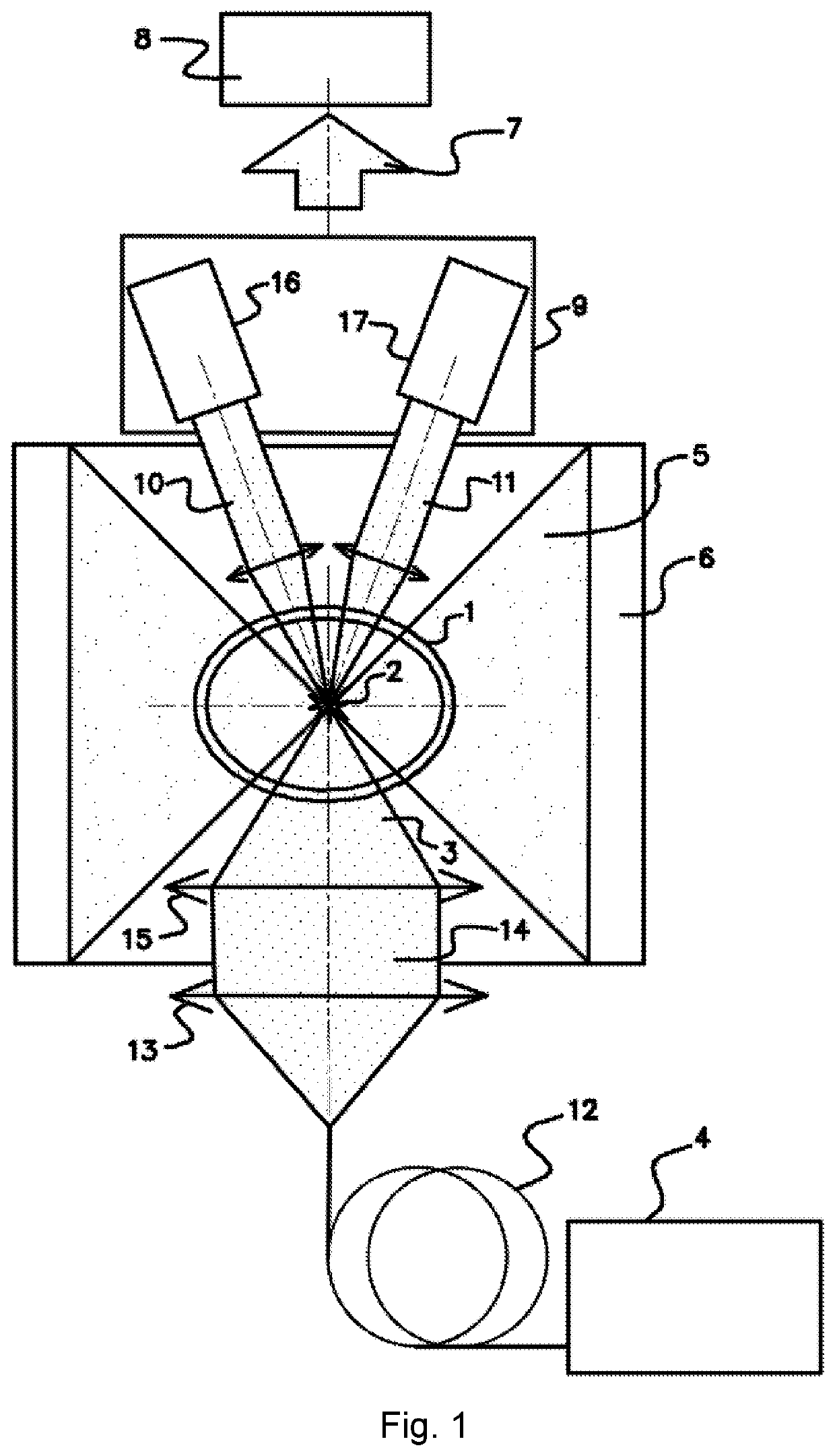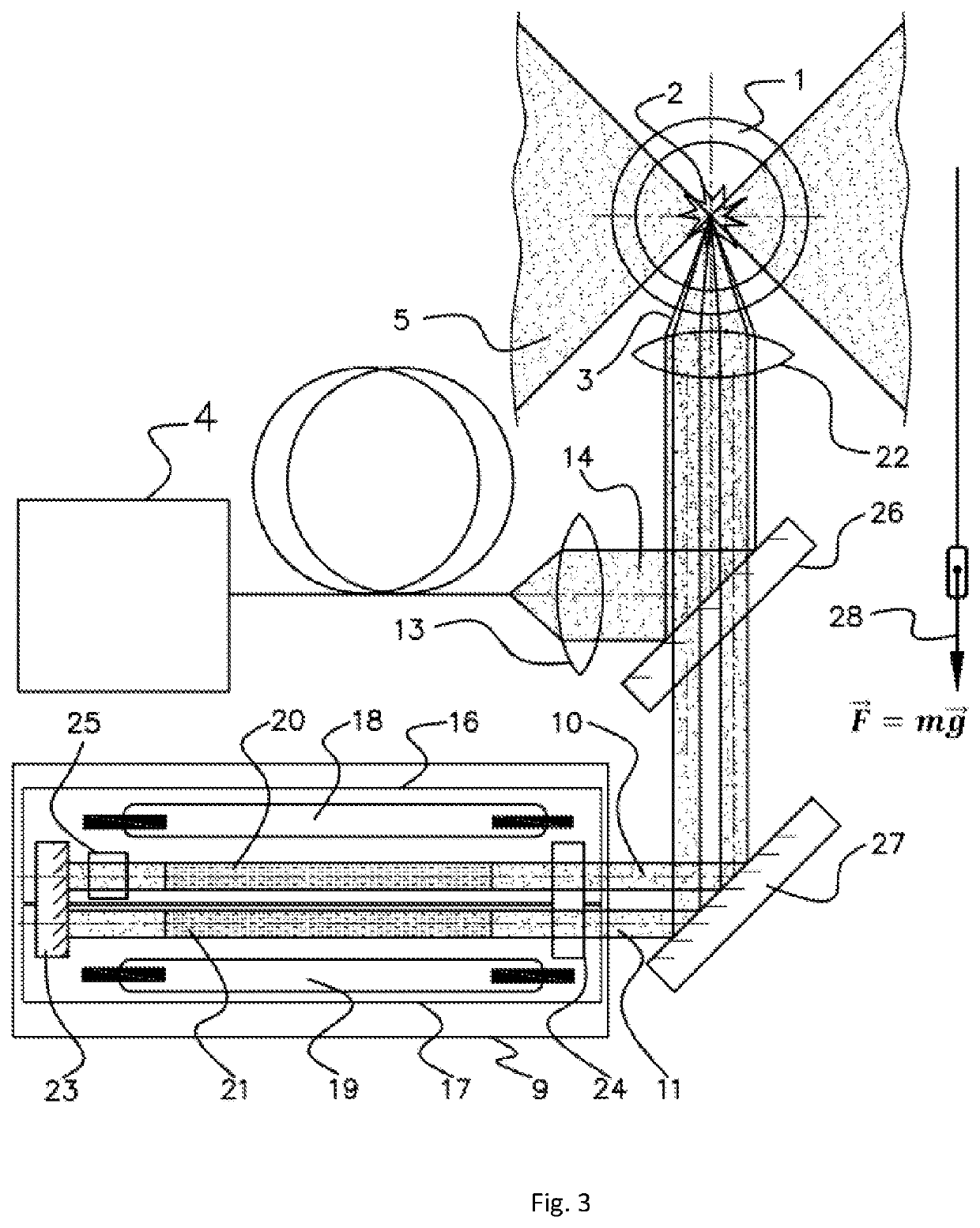Laser-pumped plasma light source and plasma ignition method
a technology of laser-pumped plasma and light source, which is applied in the direction of gas discharge lamps, electric discharge lamps, electrical apparatus, etc., can solve the problems of light source degradation, reduced transparency of bulb walls, and spatial and energetic stability of laser-pumped plasma light sources, and achieves reliable optical breakdown, small output power, and reliable cod ignition
- Summary
- Abstract
- Description
- Claims
- Application Information
AI Technical Summary
Benefits of technology
Problems solved by technology
Method used
Image
Examples
Embodiment Construction
[0053]This description is provided to illustrate how the invention can be implemented and in no way to demonstrate the scope of this invention.
[0054]According to the example of invention embodiment shown in FIG. 1, the laser-pumped plasma light source comprises the high-pressure gas filled chamber 1, typically 10 atm or higher. At least a part of the chamber 1 is optically transparent. FIG. 1 shows an embodiment with a completely transparent chamber manufactured from an optically transparent material, e.g. fused quartz. The chamber 1 contains the radiating plasma region 2 sustained in the chamber by the focused beam 3 of the CW laser 4. At least one output beam of plasma radiation 5 directed to the optical collector 6 and intended for subsequent use, exits the chamber 1. The optical collector 6 forms the radiation beam 7 transmitted, for example, via an optical fiber and / or a system of mirrors to one or more optical consumer systems 8 which uses broadband radiation emitted by plasma...
PUM
 Login to View More
Login to View More Abstract
Description
Claims
Application Information
 Login to View More
Login to View More - R&D
- Intellectual Property
- Life Sciences
- Materials
- Tech Scout
- Unparalleled Data Quality
- Higher Quality Content
- 60% Fewer Hallucinations
Browse by: Latest US Patents, China's latest patents, Technical Efficacy Thesaurus, Application Domain, Technology Topic, Popular Technical Reports.
© 2025 PatSnap. All rights reserved.Legal|Privacy policy|Modern Slavery Act Transparency Statement|Sitemap|About US| Contact US: help@patsnap.com



